- EasyCard
- Trade
- Help
- Announcement
- Academy
- SWIFT Code
- Iban Number
- Referral
- Customer Service
- Blog
- Creator
With the end of the Biden era and the beginning of the Trump era, how will various types of assets perform? How should investors seize opportunities?
The Biden era is over
Joe Biden, the 46th President of the US, officially stepped down at noon on January 20 local time.
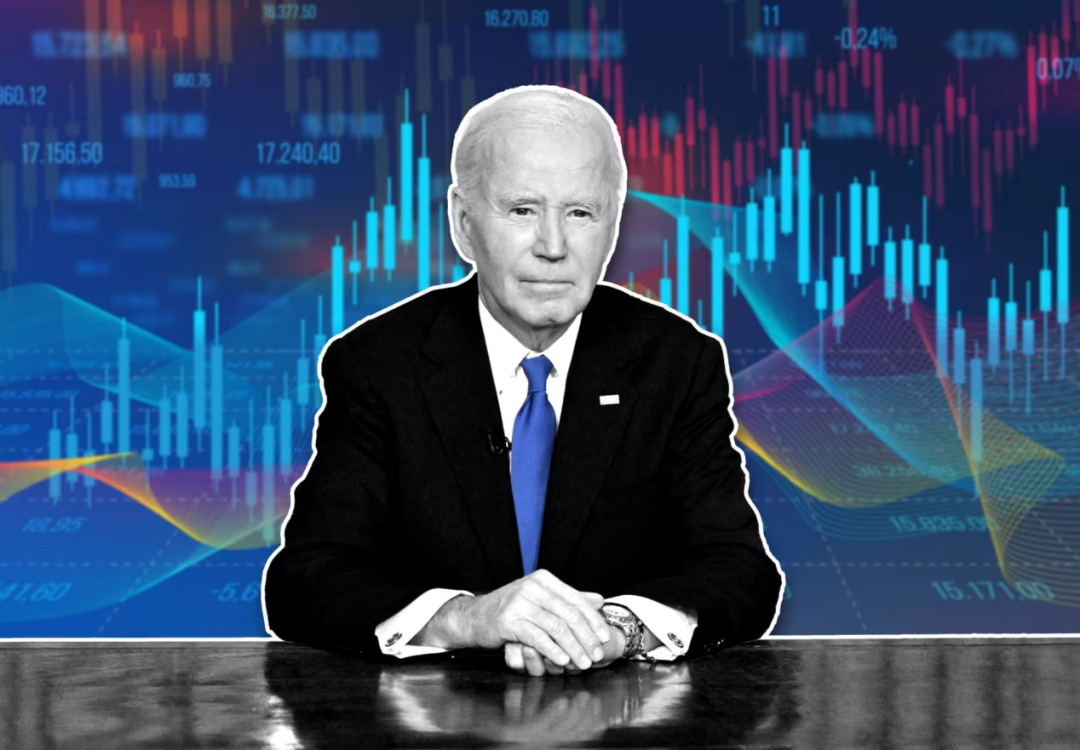
Let’s first review the stock market performance during Biden’s term
Since Biden became president on January 20, 2021, the S & P 500 index has risen by more than 55%, the Dow Jones Industries Average Index has risen by more than 39%, and the Nasdaq Composite Index, which is dominated by technology stocks, has risen by nearly 46%.
However, according to Dow Jones market data, during Biden’s four years as president, the returns of the Dow and Nasdaq were the lowest since George W. Bush’s second term from 2005 to 2009, and the returns of the S & P 500 index were the lowest since Barack Obama’s second term from 2013 to 2017.
Undeniably, Biden faced challenges such as the worsening COVID-19 pandemic and the US economic downturn at the beginning of his tenure in 2021. By the end of 2021, as the global economy began to recover from the epidemic, the three major US stock indexes still achieved double-digit returns. Meanwhile, the Federal Reserve continued to implement the supportive Monetary Policy that began in early 2020.
But in 2022, against the backdrop of the ongoing conflict between Russia and Ukraine, Wall Street suffered its worst year since the 2008-2009 financial crisis, while the US economy was plagued by soaring inflation and rising interest rates.
In 2023 and 2024, the technology-driven recovery of corporate profits and the artificial intelligence boom will drive the US stock market to new highs. As of the end of 2024, the S & P 500 index has posted double-digit annual gains for two consecutive years, and the bull market is entering its third year.
The Trump era begins
Donald Trump was inaugurated as the 47th President of the United States on January 20, 2025. The inauguration ceremony will be held at the US Capitol in Washington, D.C. Vice President-elect JD Vance will be sworn in first, followed by President-elect Trump who will be sworn in by Chief Justice John Roberts. After the inauguration, President Trump is expected to deliver an inaugural speech outlining the government’s vision for the country.
His policy agenda is also expected to significantly shape global economic trends and Financial Marekt. Therefore, as an investor, we are closely monitoring its potential impact on various assets.
Next, let’s review his main asset performance and prospects in the first and second terms, as well as how the policy directions of the two terms will differ.
Performance and outlook of major assets during Trump’s two terms
Trump’s first term lasted from January 20, 2017 to January 20, 2021. During this period, major asset classes such as Bitcoin , S & P 500 Index , and Gold/USD all rose sharply, rising by 3,871%, 67.82%, and 55.44%, respectively. In contrast, the USD and US 10-year Treasury yield fell by 10.64% and 56.32%, respectively.
From the election day on November 5, 2024 to December 26, 2024, the S & P 500 index and Bitcoin continued to strengthen, with gains of 5.69% and 41.18% respectively. Compared with the first period, the US dollar index and the yield of US 10-year Treasury bonds both rose, rising by 4% and 6.95% respectively, while gold fell by 3.37%.
What are the differences in policy directions between Trump’s two terms?
Trump’s second term policies mainly include domestic tax cuts, tariffs on foreign goods, deregulation, expulsion of illegal immigrants, and promotion of fossil fuels in industrial policy.
Compared to Trump’s first term, the current tariff policy proposed by Trump is more comprehensive. He promised to impose a 10% tariff on all imported goods, possibly imposing a 60% tariff on China, and once claimed to impose a 25% tariff on all goods entering the US from Mexico and Canada, with an additional 10% tariff on Chinese goods. In order to promote economic development and create job opportunities, he proposed to reduce the corporate tax rate to 15%. In terms of energy and environmental policies, he plans to cancel subsidies for green energy and increase the exploitation of oil and gas resources. In terms of foreign policy, he will prioritize the US and reduce intervention in geopolitical issues. The current policy may increase the US fiscal deficit and exacerbate inflationary pressures.
How will Bitcoin and US stock market assets perform after Trump takes office on January 20th?
1. Domestic tax cuts and deregulation: finance and small-cap stocks will benefit
During Trump’s first term, the S & P 500 index performed strongly, with significant gains in sectors such as technology, energy, and manufacturing. Trump’s policy stance seems to be more favorable to the stock market. So how will Trump’s 2.0 policy affect the US stock market?
The Trump administration’s policy of lowering corporate tax rates and increasing fiscal stimulus may help economic growth and corporate profits, and may continue to boost the stock market.
The financial sector, especially bank stocks, may benefit from tax cuts and deregulation. After Trump’s election, Goldman Sachs , JPMorgan Chase , and Citigroup all rose sharply.
Trump’s tax cuts are particularly good for small-cap stocks, as lowering the corporate tax rate to 15% is likely to boost these companies’ profits. After Trump’s victory, the Russell 2000 index hit an all-time high, rising more than 10%. Analysts expect capital concentration to decline and funds to shift from tech giants to smaller, more cycle-sensitive stocks.
Trump-related stocks will also be affected. After Trump’s election, Tesla’s stock price hit a new high,Trump Media Technology’s stock price soared, and Bitcoin-related stocks also saw a significant increase. With Trump in office, as an investor, you can continue to pay attention to stock opportunities related to Trump’s transactions.
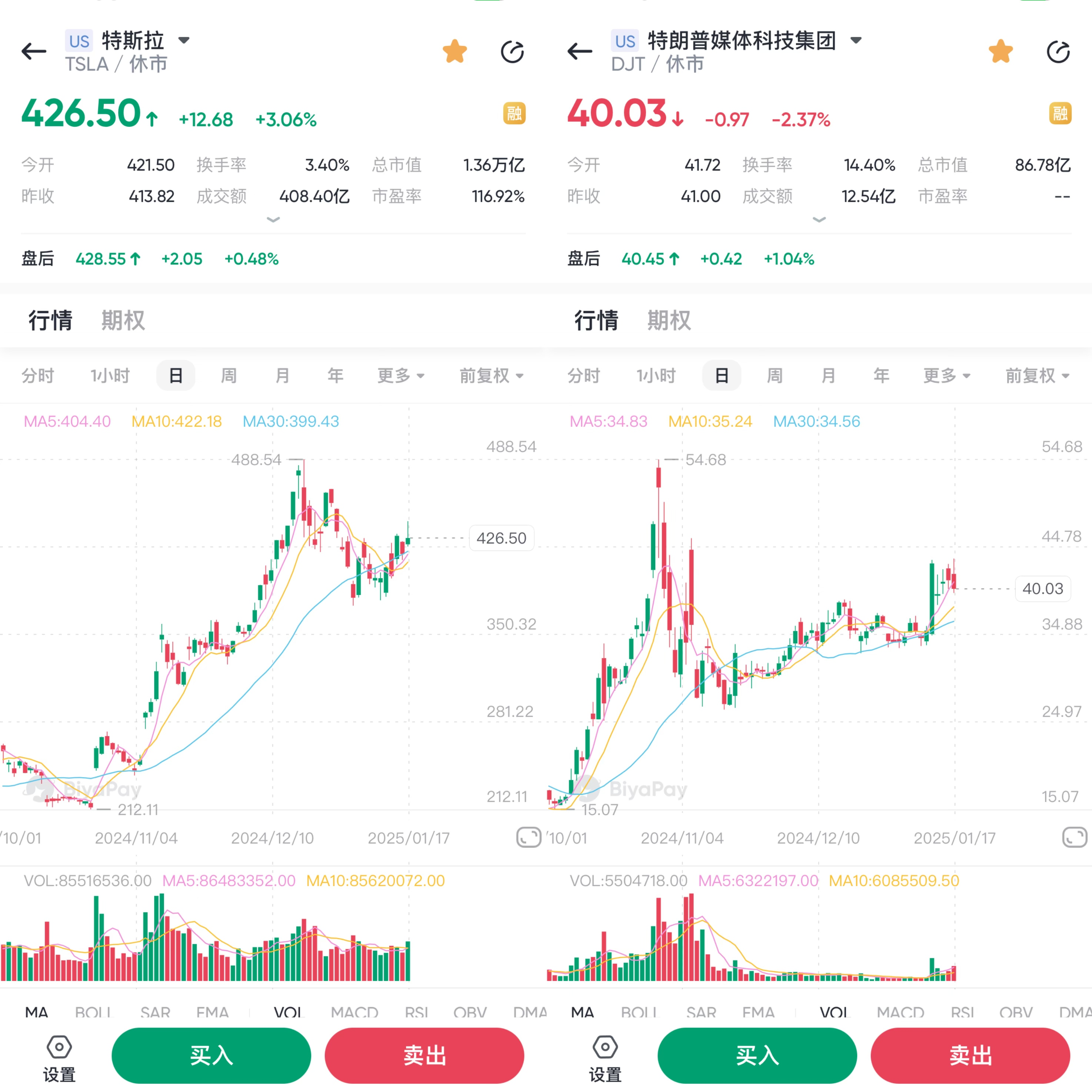
2. Actively promote the development of digital currency: Bitcoin price is expected to reach a new high
During Trump’s first term, he held a skeptical and dismissive attitude towards cryptocurrency, repeatedly criticizing digital assets such as Bitcoin, calling these volatile and speculative assets scams, and advocating that the US dollar is the only legal currency in the US. Despite Trump’s lack of support for Bitcoin during his first term, Bitcoin still soared by 3817%.
Unlike his first term, Trump 2.0 has a very positive policy towards Bitcoin. He not only publicly expressed support for the development of cryptocurrency, but also proposed a plan to include Bitcoin in the US strategic reserve assets. He established annual procurement targets through legislation, gradually expanding the country’s Bitcoin holdings, and further promoting the development of the cryptocurrency industry after taking office. After Trump’s re-election, the price of BTC soared all the way, breaking through the $100,000 mark and hitting a new historical high. The cumulative increase from November 5th to December 26th exceeded 41%.
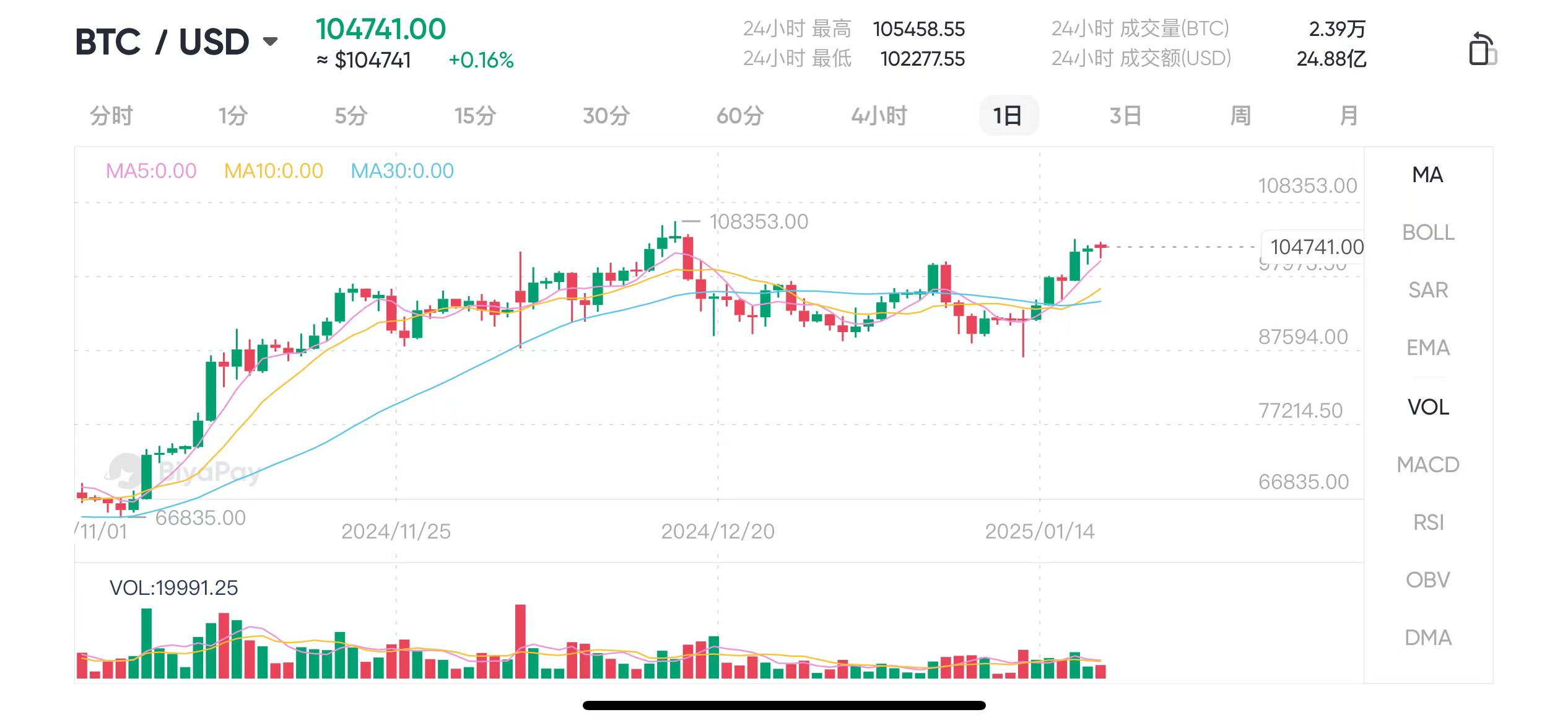
Given the significant rise in Bitcoin during Trump’s first term despite lack of support, investors may wonder how Bitcoin will perform in Trump’s second term with clear support.
What are the related stocks?
- MicroStrategy(MSTR)
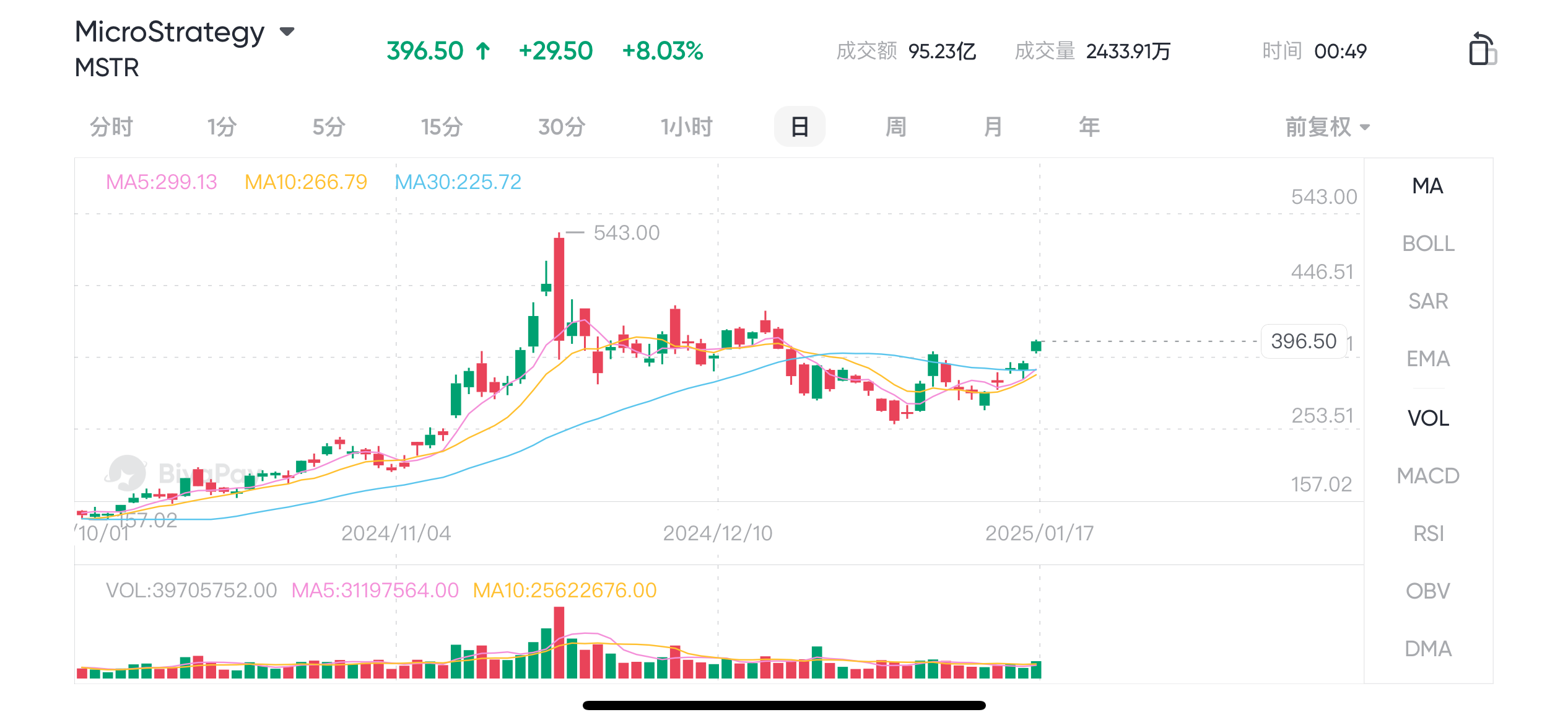
- Coinbase(COIN)
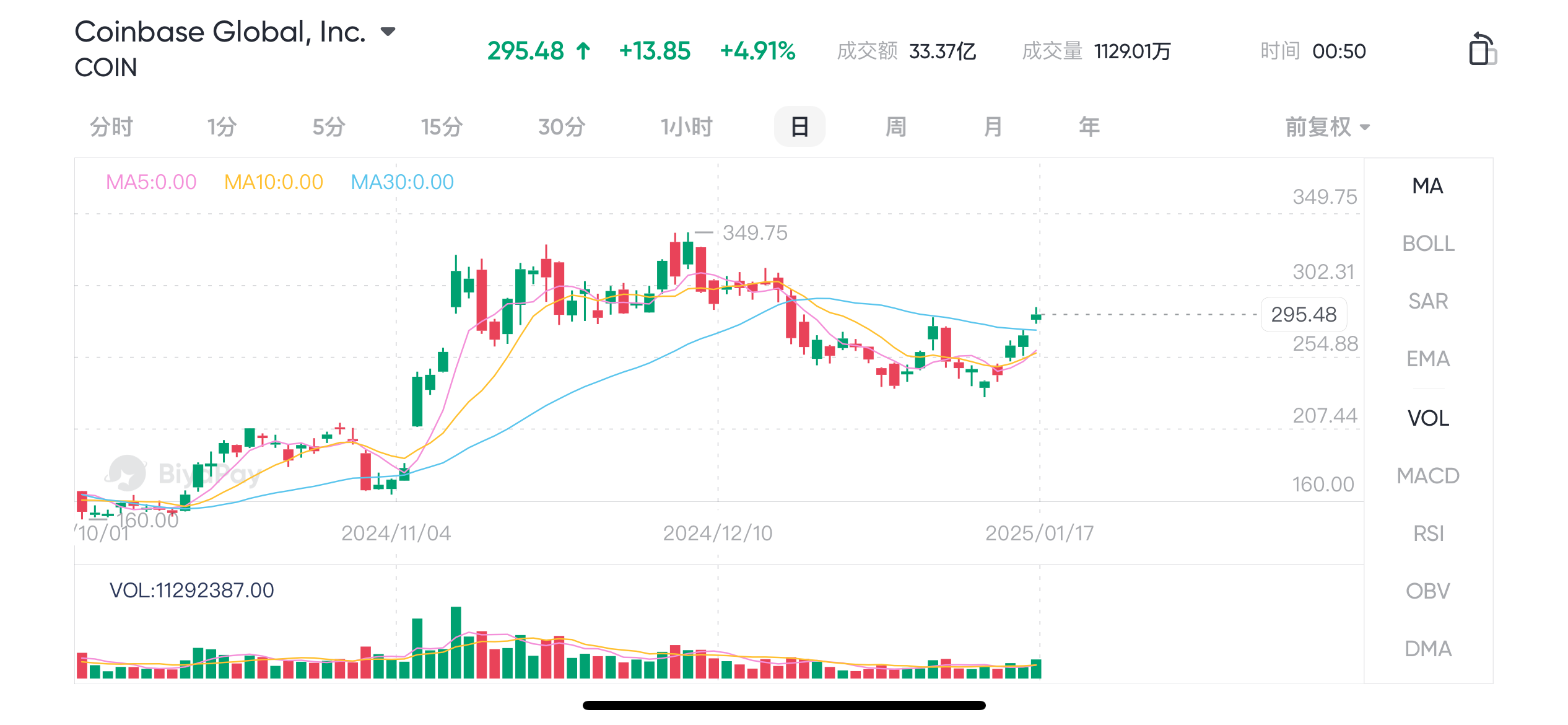
- MARAHoldings(MARA)
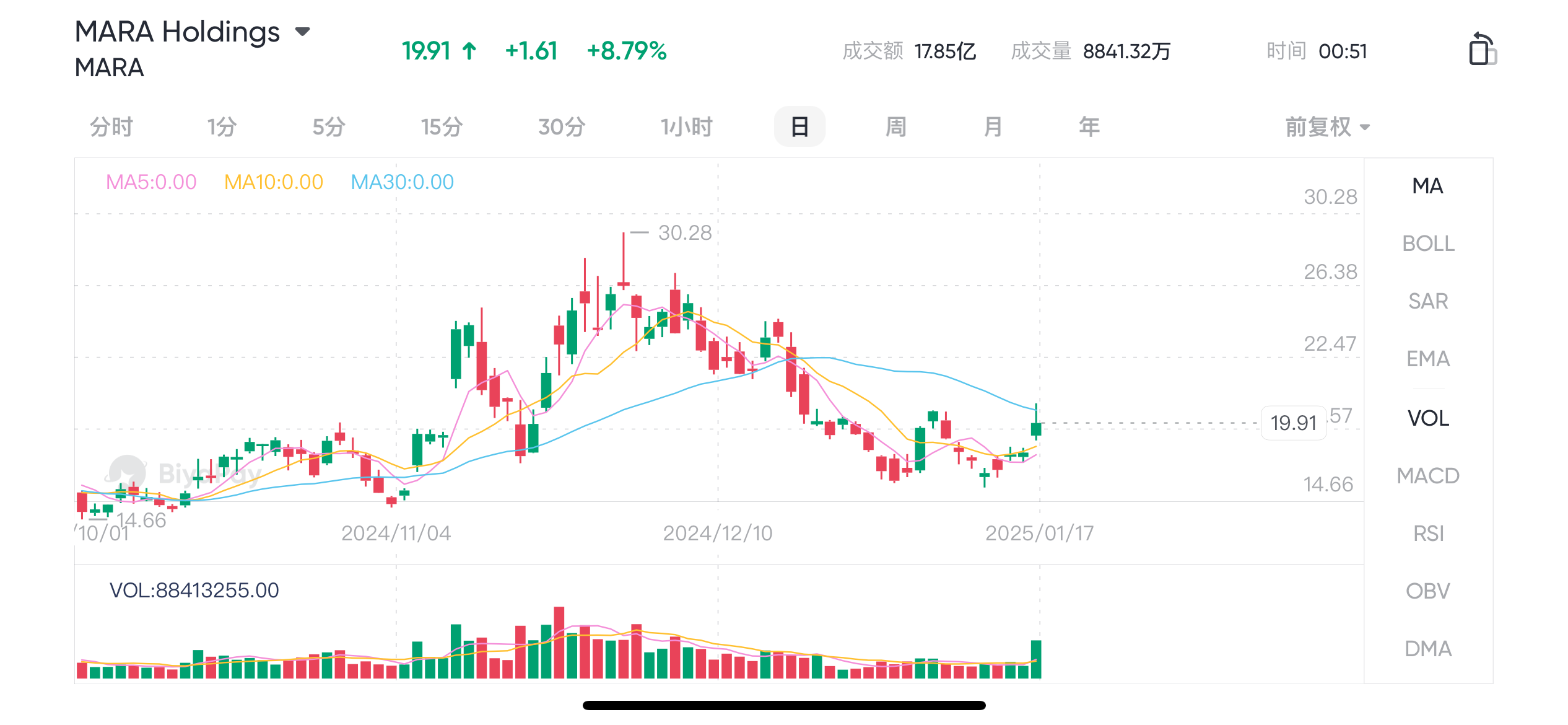
- CleanSpark(CLSK)
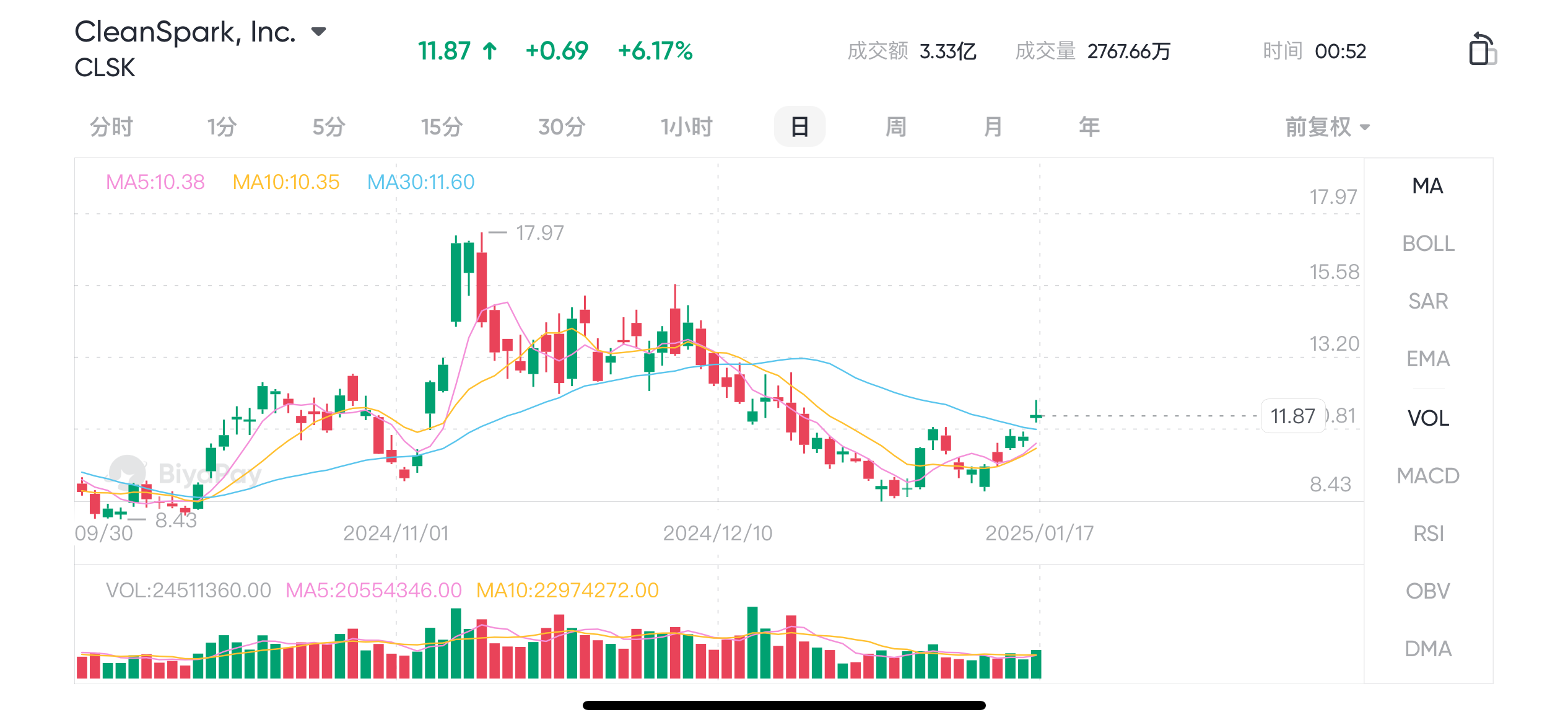
- RiotPlatforms(RIOT)
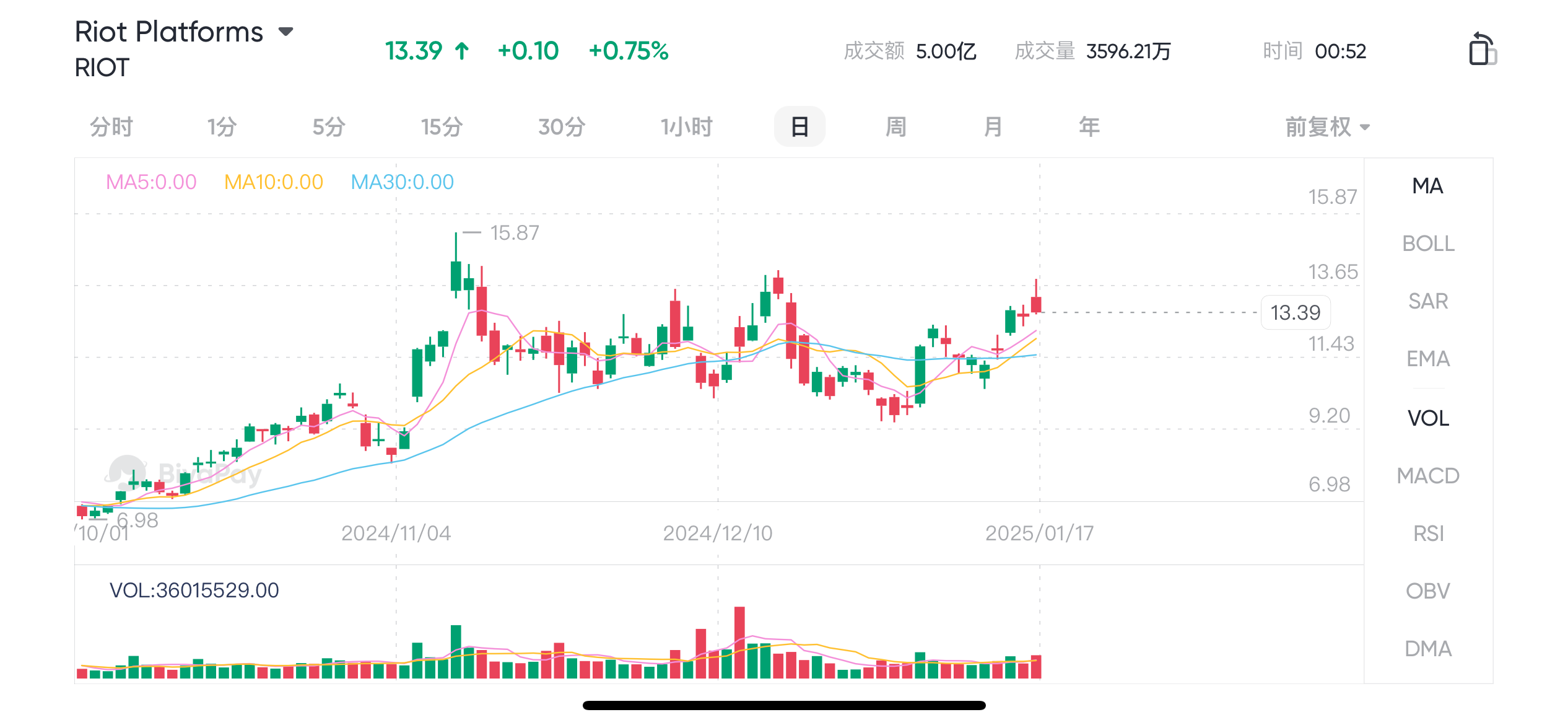
In summary, these are various assets that the market may benefit from. For these assets that will benefit, investors can seize the opportunity through the multi-asset trading wallet BiyaPay.
BiyaPay not only allows real-time online trading of US stocks, but also allows depositing digital currency (such as USDT) into the platform, and then withdrawing fiat currency to invest in US stocks with other securities. Withdrawal and arrival on the same day.
Moreover, BiyaPay can also trade digital currencies such as BTC and ETH in real-time. For example, investors who purchase cryptocurrencies such as Bitcoin in traditional ways often encounter some problems, such as bank cards being frozen during deposits and withdrawals. To avoid this risk, BiyaPay provides a safe and convenient B2C withdrawal solution, effectively solving card freezing and fund problems in OTC or C2C transactions.
Finally
In the era of Trump’s second term, compared to the Biden era, Trump’s current policies will focus more on tax cuts, deregulation, promoting energy and manufacturing recovery, and actively developing digital currencies.
For the stock market, financials, small-cap stocks, and Trump-related companies may benefit, especially with the promotion of tax cuts and policy relaxation, corporate profits may further increase.
Trump’s attitude towards digital currency has also brought new momentum to Bitcoin and related assets. Especially if the plan to include Bitcoin in strategic reserve assets is implemented, it will push the cryptocurrency market to new highs.
Galaxy Digital’s research director Alex Thorn predicts that Bitcoin will break through $150,000 in the first half of this year and reach $185,000 in the fourth quarter. Meanwhile, Chief Product Officer Elitsa Taskova of crypto lending platform Nexo predicts that Bitcoin will more than double to $250,000 within a year. From the perspective of the next decade, she believes that the market value of the entire crypto market will surpass that of gold.
In summary, Trump’s second term may bring potential market opportunities for investors, especially in technology stocks, financial sectors, and digital currency fields. Keeping up with policy changes and flexibly deploying diversified assets will be the key to seizing opportunities.
*This article is provided for general information purposes and does not constitute legal, tax or other professional advice from BiyaPay or its subsidiaries and its affiliates, and it is not intended as a substitute for obtaining advice from a financial advisor or any other professional.
We make no representations, warranties or warranties, express or implied, as to the accuracy, completeness or timeliness of the contents of this publication.




Contact Us
Company and Team
BiyaPay Products
Customer Services
is a broker-dealer registered with the U.S. Securities and Exchange Commission (SEC) (No.: 802-127417), member of the Financial Industry Regulatory Authority (FINRA) (CRD: 325027), member of the Securities Investor Protection Corporation (SIPC), and regulated by FINRA and SEC.
registered with the US Financial Crimes Enforcement Network (FinCEN), as a Money Services Business (MSB), registration number: 31000218637349, and regulated by FinCEN.
registered as Financial Service Provider (FSP number: FSP1007221) in New Zealand, and is a member of the Financial Dispute Resolution Scheme, a New Zealand independent dispute resolution service provider.



















